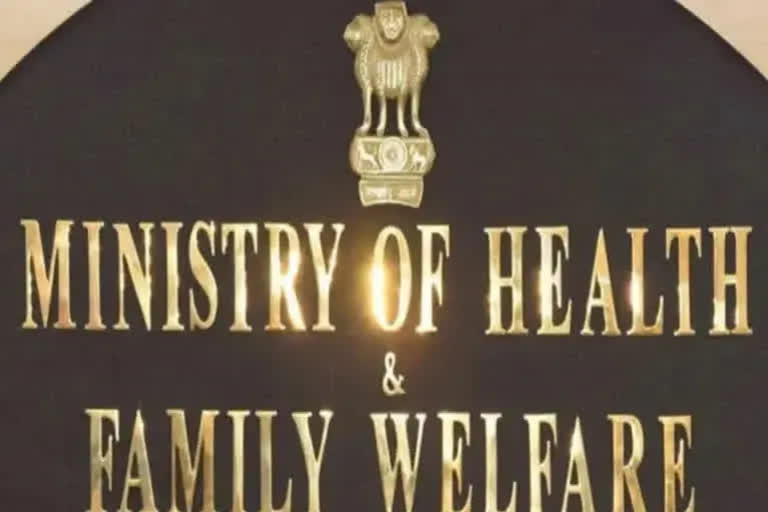New Delhi: At a time when the Centre has been emphasizing various family planning measures, government statistics revealed that usage of condoms, as distributed by the government, as a family planning measure has significantly increased.
In 2021-22, 33.70 crore pieces of condoms were distributed across the country. "Despite the pandemic, condom distribution witnessed an increase of 7.2 per cent as compared to 2020-21," data revealed by Health Management Information System (HMIS 2020-21 and 2021-22) showed. As per the data, as many as 34.44 crore condoms were distributed in 2018-19, followed by 32.01 crores in 2019-20, 31.45 crores in 2020-21, and 33.70 crores in 2021-22.
Uttar Pradesh followed by Rajasthan, Andhra Pradesh, and West Bengal are the leading States in the distribution of condoms in 2021-22 in the country. Though, Rajasthan, West Bengal, Punjab, and Gujarat have witnessed a decline in the distribution of condoms in 2021-22 against the previous year's condom distribution.
Uttar Pradesh (5.2 crores), Rajasthan (3.7 crores), Andhra Pradesh (3.0 crore), West Bengal (2.8 crores), Gujarat (2.3 crores), Madhya Pradesh (2.3 crores), Maharashtra (2.0 crore), Punjab (2.0 crore), Karnataka (1.6 crores) and Jharkhand (1.5 crores) are the top ten States reported maximum condom pieces' distribution, the HMIS statistics revealed.
The Health Management Information System of the Ministry of Health and Family Welfare is operational since 2008 and is an exclusive source of regular information for facility-level health data nationwide.
HMIS 2020-21 and 2021-22 Analytical Report is based on an analysis of data uploaded by States and UTs on the HMIS portal. Analysis of the collected data enables the government to assess whether and how the program has achieved its objectives.
It is worth mentioning that it was in 1952 when India became the first nation in the world to introduce a national program for family planning. The family planning program has transformed in terms of policy and actual program execution from its historic start in 1952.
The National Population Policy (NPP), introduced in 2000, brought a holistic and target-free approach that helped in the reduction of fertility to not only achieve population stabilization goals but also promote reproductive health, leading to a reduction in maternal, infant, and child mortality and morbidity. There was a gradual transition from the clinical approach to the reproductive child health approach.
Sterilization (both male and female), IUCD, Injectable contraceptives (Antara Programme), Oral pill,s and condoms are some of the major contraceptive measures being promoted by the Central government for population control.
As per the HMIS data in possession of ETV Bharat, the maximum number of injectable MPA doses (Antara programme) in 2021-22 were reported by Uttar Pradesh (5.9 lakh) followed by West Bengal (4.01 lakh), and Rajasthan (3.15 lakh).
The seven high focussed States including Uttar Pradesh (6.00 lakh), Rajasthan (3.16 lakh), Bihar (2.76 lakh), Jharkhand (1.27 lakh), Madhya Pradesh (1.06 lakh), Assam (0.65 lakh), and Chhattisgarh (0.25 lakh) contributed to 64 per cent of total injectable MPA doses in 2021-22 under mission Parivar Vikas.
In the year 2021-22 male sterilization, 33,635 contributed to 1 per cent of the total sterilization services provided in India. Although it has improved by 27 per cent from 2020-22 (26,424), it has declined by 38 per cent when compared to 2019-20 (54,239).
On the other hand, female sterilization improved by 11.4 percent from 27.61 lakh in 2020-21 to 29.75 lakh in 2021-22. However, it is yet to reach to its pre-pandemic level of 32.98 lahks in 2019-20.
Significantly, centchroman (chhaya pills) emerged as a popular contraceptive method of choice during the Covid19 pandemic in almost all States, the HMIS report said. "The number of Chhaya pills distributed in 2021-22 was 76.5 lakh, in comparison to the total number of 34.5 lakh stripes distributed during 2019-20," the report said.
Uttar Pradesh with 19.56 lakh, West Bengal 10.80 lakh, Jharkhand 8.86 lakh, Bihar with 7.82 lakh, Madhya Pradesh with 4.68 lakh, Rajasthan with 3.81 lakh, Karnataka with 3.13 lakh, Maharashtra with 2.37, Tamil Nadu 2.37 and Gujarat with 2.29 lakhs, are the tip then States reported maximum use of Chhaya pills.


